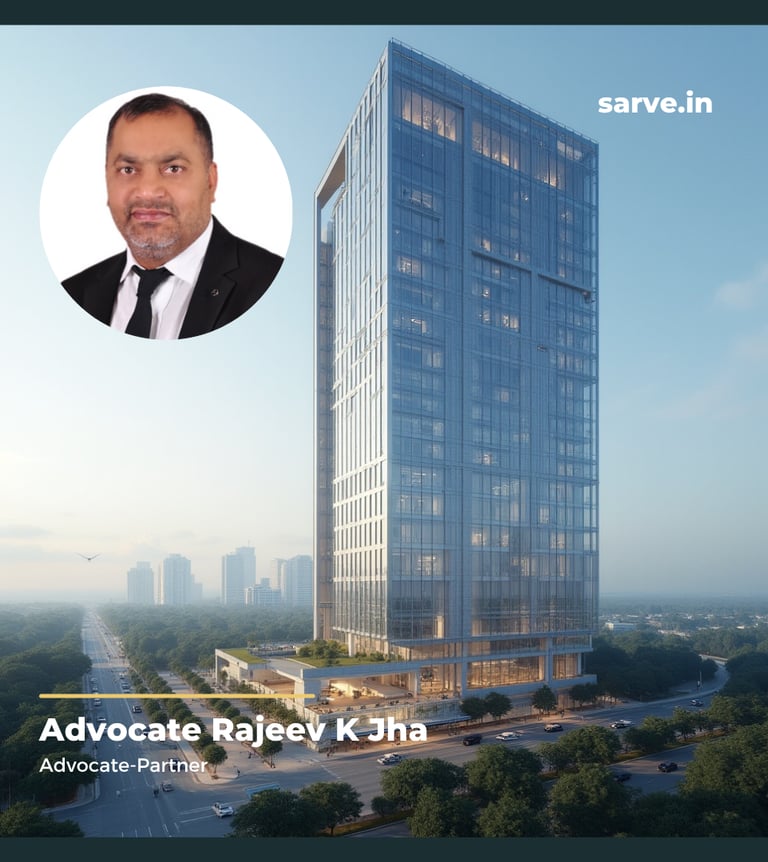Navigating Jakkur Aerodrome NOC: BBMP Regulations and Real Estate Implications
Obtaining the NOC involves a structured, multi-stakeholder process, typically taking 4-8 weeks, though delays can extend to months due to scrutiny.
In Bengaluru's booming #realestate landscape, proximity to #Jakkur Aerodrome—a key facility for the Government Flying Training School—imposes stringent height restrictions on #construction #projects. A recent Order highlighted the Karnataka High Court's directive restricting construction activities near the aerodrome, emphasizing the mandatory No Objection Certificate (#NOC) to safeguard aviation safety. This ruling underscores the intersection of urban development and aviation #regulations, particularly for high-rise residential and commercial projects within a 20-30 km radius.
The related regulatory notification stems from Bruhat Bengaluru Mahanagara Palike (BBMP)'s #building plan approval guidelines, detailed in their official NOC Requirements document. Under these rules, any building exceeding 15 meters in height requires prior clearance from the Jakkur Flying School, alongside Hindustan Aeronautics Limited (HAL) or Air Force Station Yelahanka if applicable. Additionally, sites within 10 km of Kempegowda International Airport (KIA) mandate Airport Authority of India (#AAI) clearance. This framework aligns with the Aircraft Act, 1934 (Section 9A) and Ministry of Civil Aviation's Gazette Notification GSR 751(E) of September 30, 2015, which define Obstacle Limitation Surfaces (OLS) to prevent structures from encroaching on flight paths. #BBMP enforces this via its online Building Plan Approval System (#BPAS), integrating NOC as a prerequisite for plan sanction.
#Approval Process for #JakkurAirportNOC
#ObtainingtheNOC involves a structured, multi-stakeholder process, typically taking 4-8 weeks, though delays can extend to months due to scrutiny.
1. #SiteAssessment and Application Preparation: Verify site coordinates (WGS-84 format) and elevation (AMSL) via Survey of India or Karnataka State Remote Sensing Application Centre (KSRSAC). Engage a licensed architect to prepare plans showing vertical profiles, including superstructures like water tanks. For Jakkur-specific cases, if the site is closer to Jakkur than HAL Airport, first apply to HAL for a conditional NOC, which defers final clearance to AAI for Jakkur.
2. Submission: Submit two sets of the application by post to the Deputy General Manager (Airport Operations), Jakkur Flying School/Government Flying Training School, or via AAI's portal for integrated review. Required documents include: notarized affidavits (Forms 1A/1B), site ownership proofs (sale deed, encumbrance certificate), BBMP khata extract, zoning map, and indemnity undertaking against aviation hazards.
3. Review and Site Inspection: The aerodrome authority's NOC Committee (comprising aviation experts) evaluates against OLS criteria, ensuring no penetration of approach/departure surfaces (e.g., max 150m above aerodrome elevation for transitional surfaces). Site visits confirm data accuracy.
4. Issuance and Integration: Upon approval, the NOC (valid 5 years) is forwarded to BBMP for plan sanction. For #RERA-registered projects, it's a compliance milestone before occupancy certificate.
Legal Analysis for Real Estate Projects
From a legal standpoint, non-compliance invites severe repercussions under BBMP Building Bye-Laws (2015) and the Karnataka Town and Country Planning Act, 1961. Unauthorized constructions risk demolition orders, as seen in High Court interventions, plus fines up to ₹5 lakh and imprisonment (Section 21, Karnataka Municipal Corporations Act). For developers, RERA (Karnataka Real Estate Regulatory Authority) mandates disclosing NOCs in project registrations; violations erode buyer trust and trigger penalties under Section 59 (up to 10% of project cost). Buyers should scrutinize AAI/HAL NOCs during due diligence to avoid title defects, especially in zones like Yelahanka where height caps (e.g., 1037m AMSL near HAL) limit FSI utilization.
This regime balances growth with safety, but bureaucratic hurdles often inflate costs by 5-10%. Developers can mitigate via pre-application consultations with BBMP's zonal offices. Ultimately, proactive adherence not only averts litigation but enhances project viability in Bengaluru's aviation-sensitive corridors.
Disclaimer: All views are personal and educational purpose only.
Written by: Advocate Rajeev K Jha
#sarvepermits #advocaterajeevkjha #rajeevkjha #realestateadvocate #RealEstate #RegulatoryCompliance #BengaluruDevelopment #JakkurAerodrome #ProfessionalDialogue
North India - Delhi NCR
UTTAR PRADESH : B-122, Sector-Omicron-1A, Greater Noida, Gautam Budh Nagar, Uttar Pradesh, India - 201310
Hours
I-V 9:00-18:00
VI - VII Closed


Copyright
We have @SarvePermits & Legal Advisory Pvt Ltd's original, exclusive and copyright protected content for you. Don't miss out on the opportunity and get access to our informative content today! #CopyrightProtected #OriginalContent #SarvePermitsAndLegal. If you have any questions about using our content, please contact us for permission. #copyright #protectourproperty #IP #SarvePermitsAndLegalAdvisoryPrivateLimited.
Western India - Maharashtra
MUMBAI : Office No.- 1408, Ghanshyam Enclave, Opp. Lalji Pada Police Station, Link Road, Kandivali West, Mumbai
South India - Karnataka
BANGALORE : B-2, Ground Floor, Museum Terrace, 29 Museum Road, Bangalore-560001
RESIDENCE : 50808, Tower 5, Bhartiya City Nikoo Homes 1, Thanisandra Road, Kannur, Bangalore - 560064
Eastern India - Jharkhand
BOKARO : 689, Sector-1/C, Bokaro Steel City, Dist.- Bokaro, Jharkhand -827001


